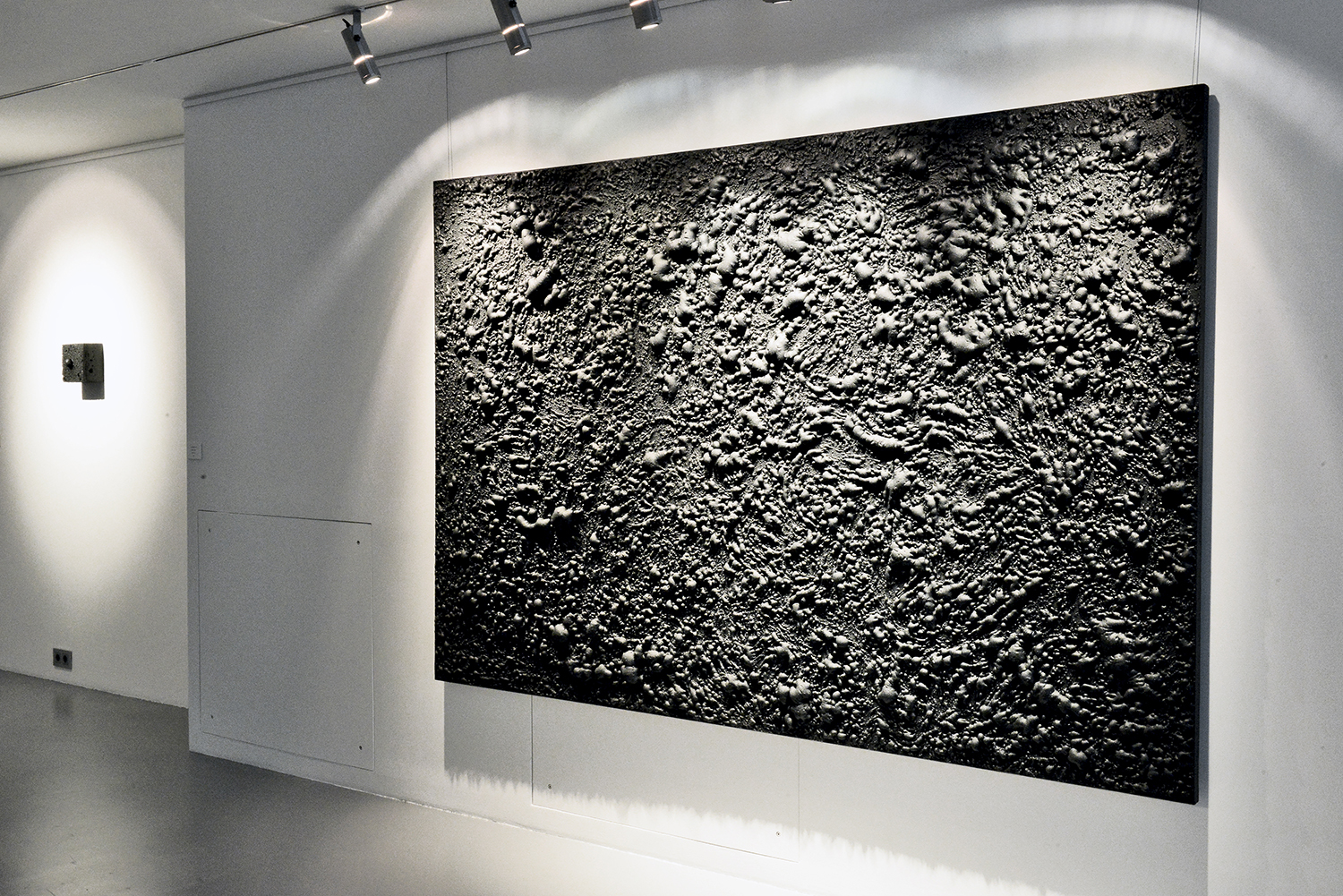“Mass Hallucination of Still Modernity”
In the age of nanotechnology and wireless networks when Internet speed boggles the imagination and Internet access is possible from nearly any place in the world users are still facing the loading indicator. This pop-up sign of the looped motion is becoming a certain ouroboros of modern time and being some kind of irritant, endlessly intruding in our daily life. It is the sign which creates the situation of expectation with no limited continuum and makes users even more angry.
This already strong integrated in modern cultural memory symbolism is the subject of research in the new series of works by Zurab Arabidze. In Mass Hallucination of Still Modernity series artist’s strict geometric minimalism transforms in medial minimalism criticizing modern society, which is now standing at the stage of “pending better existence” according to Arabidze.Taken as a basis user's graphic interface of a computer program – throbber, as a digital sign, becomes a symbol of a new digital vision. Continual data downloading in Arabidze's video art arises anxious feeling of infinite expectation and at the same time reveals tension between observer and observation process.
A gradual mutation of computer interface appears in glass blocks series, where faceless particle with clear information code, multiplied in 24 parts, continues the theme of endless expectation of complex or changing image appearance on the the one hand, and on the other - this sketch of initially digital sign and its static fixation on the glass block, creates a new substantiality of throbber as one of the most important symbols of our age.
Only during the transferring process of information code to the plain surface it ceases to be a non-substantial symbol of accomplishing a definite program. Throbber becomes a target for observation and its stadial alteration, i.e. mutation, may be explored, therefore the process is becoming a happening and being narrative in nature.
Mutagenic conjunction of digital with material and disbanding in a diversity of these diametrical modernity constructions – that is the main Arabidze’s research subject. The artist shifts focus from loading to its step-by-step operation, creating “hallucination” of activity as a result.
Impossible desire of the viewer to see something certain and apparent behind the iconic image reveals a problem of a digital era man's perception, which means that visual function is no longer an important cognitive tool, but the tool of perception, that is in its turn leads the observer to the world of hallucination. Visual disorientation reached its height in a 3D-variation. Sculptural objects from the series Mutation #404 embody hallucination of the viewer, appearing from the sense of texture and physical form. Innhomogeneous surface of represented works seems like natural organic growth, resulted from mutation, not by artificial means. The feeling of some flexibility causes quite certain associations - capacity of material for mutation, but is it actually true?
Ekaterina Novokshonova.
“Mutation #404”
The “Mutation” series explores the dynamic transformation of matter and mental space, where every change results from the inevitable interaction between the internal and external. These works evoke the surface of a cosmic landscape or biological tissue subjected to both destructive and creative processes. They embody the eternal cycle of mutation, where the old gives way to the new, and the familiar transforms into the unknown.
The material on the canvases symbolizes movement and change—the fundamental essence of all existence. Within each texture lies the story of transition: smoothness becomes rough, emptiness fills, and chaos takes form. This process of mutation emphasizes the instability of forms and meanings, suggesting that nothing remains unchanged—not matter, nor human identity.
The black color of these works absorbs light like memory, retaining the past while simultaneously suppressing it in the depths of consciousness. The physical structure of the paintings evokes associations with lava frozen in a moment of transformation, reminding us that all processes—both natural and mental—are continuous and in flux.
The works in the “Mutation” series not only visualize physical changes but also delve into the process of personal mutation. We are in constant transformation—through experiences, losses, and emotions. These changes are not always visible, but they shape our internal structure, turning us into someone new. These paintings serve as a metaphor for the mutability of identity and memory, illustrating their fluid transition from one state to another.
Each textured surface speaks of struggle, resistance, and acceptance of change. The process of mutation may evoke anxiety and fear, but it also offers renewal and opportunity. Like matter, humans must undergo destruction and chaos to find new forms of existence.
Just as the cells in our body continuously renew themselves, the art in the “Mutation” series embodies the act of creation through destruction. These works resemble an observation of a microscopic world—a world of cells growing, mutating, and dying to make way for the new. In this way, they bridge biological processes and artistic intuition, emphasizing the unity of nature and creativity.
The “Mutation” series challenges the viewer to consider whether we can accept the inevitability of change and see it as more than just destruction. It invites us to rethink our relationship with transformation and loss, as it is through these processes that we gain new understandings of ourselves and the world. Mutation is not an end but a beginning—a possibility to become someone or something new.
The “Mutation” exhibition is a journey into a process that is both destructive and creatively fruitful. It is an invitation to reflect on the idea that mutation is not merely change but also movement forward, a path to renewal through acceptance.
The works from the project "Disorientation of collective visions" were exhibited:
2014 ARTISTERIUM 7 Tbilisi Annual International Contemporary Art Exhibition and Art Events. Georgia
2015 Group exhibition "Abstraction" gallery "Container" Tbilisi, Georgia
2016 Solo exhibition "Mass Hallucination of Still Modernity" "RUARTS gallery" Moscow, Russia
2017 International art fair "Art Riga" gallery "Caravan gallery" Riga, Latvia



























